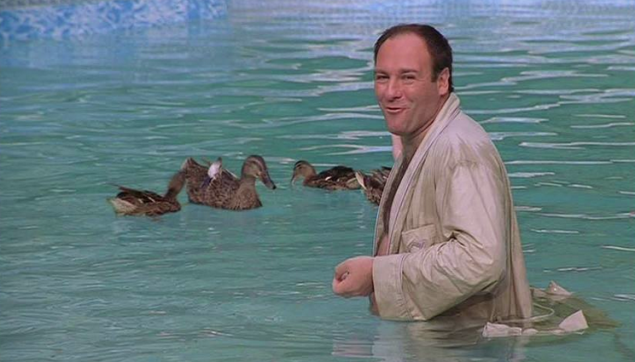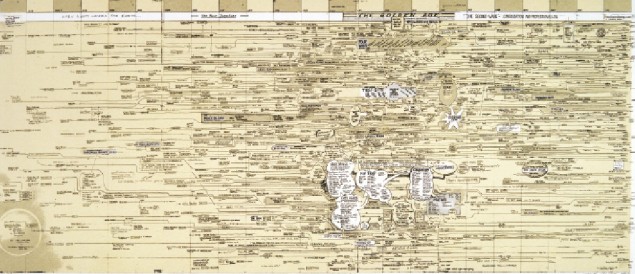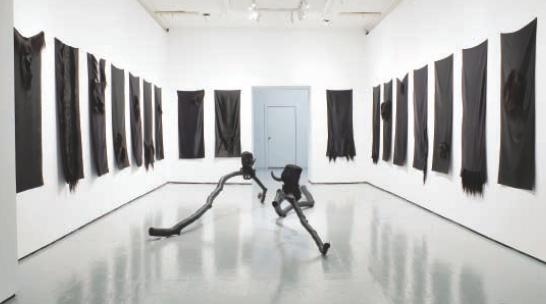
http://www.youtube.com/watch?feature=player_embedded&v=IqpDxCo2vic
archive

Virtual exhibition with artworks in the extant online gallery Scope, launched back in ‘95. (Photos courtesy of the the artist)
Ground Control to Linda Griggs: The long flight back from 90s “cyberspace”
By Sarah Schmerler

Ward Shelley’s “Williamsburg Timeline Drawing,” 2002, serigraph.
Larry Walczak has seen a whole lotta changes in Williamsburg’s gallery scene since he arrived here in 1994. Eyewash—the gallery he ran with the late Annie Herron from 1998 to 2002 on Williamsburg’s Northside—gave first starts to a host of local talents: Bruce Pearson, Eric Heist, Angela Wyman, Adam Simon, Ward Shelley, Greg Stone, David Kramer, David Brody… Recognize them? If not, you ought.
They were the artists who lived and worked here in the late ‘80s and early ‘90s who laid the foundations of today’s bustling scene. This month he’s opening an ambitious and utterly subjective exhibition called “Williamsburg2000” in which he alternately waxes nostalgic and gets his inner activist on. On tap will be 50+ artists he’s worked with at eyewash over the years, first on North 7th Street, and later in places far and wide—after the Buildings Department closed eyewash and he transformed it into a “migratory gallery.”

Nina Lola Bachhuber’s “Untitled/2010.” (calfskin, steer horns, wigs, polystyrene, paint, tights, leather, branches) Photo by Javier Cambre, courtesy of Momenta Art
Nina Lola Bachhuber can glean a lot of evocation out of just a couple materials. In her rectangular banners, or “flags,” currently at Momenta Art, those materials are silky acetate fabric and human hair. Though uniform in dimension and color (all works in the show are black), each flag possesses a unique personality through the use of strategic cuts and woven hair. A few resemble dresses with fur trim. Others are more animalistic, evincing horse manes and rodent tails. The creepiest pieces, however, have got to be the ones that look like the backs of human heads—pigtails, ponytails, combed coifs—all of which could be scalps removed from schoolgirls. The flags are like tribal insignia for esoteric neuroses.
At the center of the exhibition sits a sculpture that further instills the idea of primal urges. Two beasts perch on tree branches and square off as if preparing to do battle. These twin creatures are made of calfskin masks the size and shape of human heads, with shoulder-length curly hair and steer horns protruding from the mouth area. They evoke sadomasochism as well as some dark sacred ritual. Monochromatic and bleak, “Nachtschatten” raises questions of mortality, femininity, instinct, and allegiance. Like Joseph Beuys before her, Bachhuber finds sacrosanct energy in organic materials. Unlike Beuys, her work is pristine and under control.